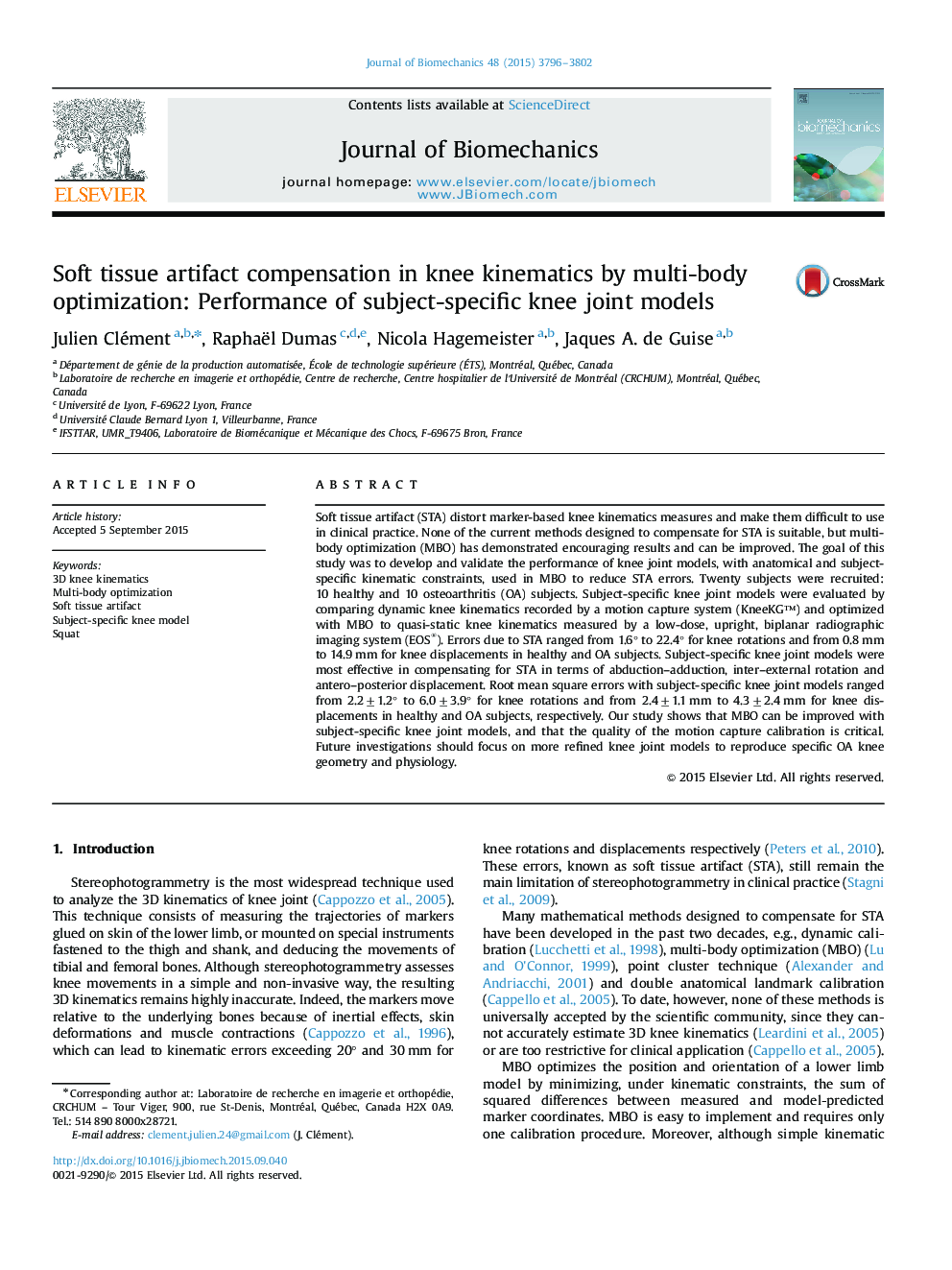| Article ID | Journal | Published Year | Pages | File Type |
|---|---|---|---|---|
| 10431512 | Journal of Biomechanics | 2015 | 7 Pages |
Abstract
Soft tissue artifact (STA) distort marker-based knee kinematics measures and make them difficult to use in clinical practice. None of the current methods designed to compensate for STA is suitable, but multi-body optimization (MBO) has demonstrated encouraging results and can be improved. The goal of this study was to develop and validate the performance of knee joint models, with anatomical and subject-specific kinematic constraints, used in MBO to reduce STA errors. Twenty subjects were recruited: 10 healthy and 10 osteoarthritis (OA) subjects. Subject-specific knee joint models were evaluated by comparing dynamic knee kinematics recorded by a motion capture system (KneeKGâ¢) and optimized with MBO to quasi-static knee kinematics measured by a low-dose, upright, biplanar radiographic imaging system (EOS®). Errors due to STA ranged from 1.6° to 22.4° for knee rotations and from 0.8 mm to 14.9 mm for knee displacements in healthy and OA subjects. Subject-specific knee joint models were most effective in compensating for STA in terms of abduction-adduction, inter-external rotation and antero-posterior displacement. Root mean square errors with subject-specific knee joint models ranged from 2.2±1.2° to 6.0±3.9° for knee rotations and from 2.4±1.1 mm to 4.3±2.4 mm for knee displacements in healthy and OA subjects, respectively. Our study shows that MBO can be improved with subject-specific knee joint models, and that the quality of the motion capture calibration is critical. Future investigations should focus on more refined knee joint models to reproduce specific OA knee geometry and physiology.
Related Topics
Physical Sciences and Engineering
Engineering
Biomedical Engineering
Authors
Julien Clément, Raphaël Dumas, Nicola Hagemeister, Jaques A. de Guise,
